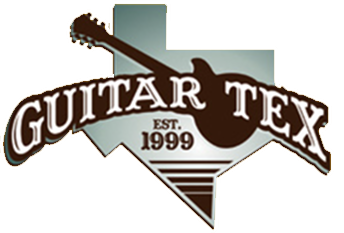When Leo Fender designed the ’59 Bassman amp, I doubt that he was thinking it would become one of the most desirable guitar amps ever. Using four 10-inch speakers gives 40 square inchs of speaker working for you. That’s better than one 15-inch (15 sq.in.) or two 12-inch speaker (24 sq.in.), right? Let’s not even mention the one 18-inch speaker used in the Acoustic 360 monster bass amp of the 70s…although it did have a built in “tuning fork”/frequency oscillator…LOL! The 10-inch speaker has proven to be the best, most efficient speaker for bass. This is evidenced by the Ampeg SVT being the reigning king of bass amps sporting eight 10-inch speakers; it is the most requested bass rigs for concert backlines.
So back to the ’59 Bassman…all four inputs have different voices-normal or bright and high or low per channel; so by using a short jumper cable you can plug your instrument into any input and then jump to either input of the other channel. The second input of either channel is -3db which is useful to know as it affects the overall sound by virtue of how hot a signal the preamp is perceiving and which is more preferable to the player’s ear. Experimentation is the only way to know which arrangement will be preferable for any given application where the variables are what’s coming in-guitar (passive or active pickups) and pedals (1,2,3,4 or more). Then the final icing on the cake is blending the two channel volumes.
It must be noted that early Marshall amps utilized the same configuration of inputs on the classic Plexi amp heads and the exact same methods of jumping channels was common usage. This actually made it possible to get a smoother tone, if you will, out of an amp that could flat out part your hair. In the 70s, I was very happy with my old blonde Bassman with 2-JBL D120Fs in the cabinet and wish I had known the tricks of getting a Marshall amp to sound good when my bandmate at the time who had a full Marshall 100 stack suggested that I borrow his friend’s matching stack for a show. We split the cabs putting the others’ bottom on our respective sides of the stage. Good thing the bass player had an Acoustic 360 LOL!! A slight rewind in time to the late 60s, the original guitar player in Rocksand, George Hill (r.i.p.) used a Y-cord to play out of both a Fender Dual Showman and a Vox Super Beatle. His blend of these two classic amps sounded awesome and yes, same bass player with the Acoustic 360 and with me on rhythm guitar with my Kustom 200 and two 2-15 bottoms. Lord we were loud and had only a Shure Vocal Master PA with no monitoring…if in-ear monitors were available then, I’m sure we wouldn’t have used them. It was get the PA out front and as loud as it would go and then get with it!
So back in the dark ages of rock and roll, Y-cords as referenced above were used to put more microphones into whatever you were using for PA, so that two guitars could be hooked up to a single input amp and even to split speaker outputs. Handy little item, the Y-cord, which was in a way the predecessor to the A-B Box. I’m sure many guitar players using multiple instruments on the job have used an A-B Box. Many moons ago, Morley marketed the first such box that would also “combine” the two. But reverse the thinking now because instead of combining instruments you come in with one guitar and go out to two amps or two channels of an amp, e.g., a Fender two channel amp (note: not a reverb model) like a black face Pro Amp, Super Amp, Concert Amp, or Deluxe Amp for example. This enables you to mix up the exact sound you want to hear. Remember-tone controls are also volume controls…sometimes less is more. In the case of the Fender amp, like my ’64 Pro Amp, you now have jumping and combining possibilities. Too cool, right?
Well my new love, the Quilter Aviator Cub will allow the same ability to combine. Even without separate tone controls, I get a great sound from using the Blackface and the Tweed voices-both separately and combined. I put the Quilter side by side with my ’64 Fender Pro and put them through the paces. I concluded there is absolutely enough headroom on the Quilter to keep up with the Fender. And the tone from the Quilter is very satisfying to this guy who has played Fender tube amps exclusively since the 70s. They are the absolute warmest solid state amp I’ve ever heard! I love them all! So besides the cost of changing tubes every year or so and the difference between even and odd harmonics to the ear, which is an entirely different conversation, what other difference is there for me to note? Roughly 30 lbs! This old man is traveling much lighter these days and loving my new best friend!
Being a Fender amp guy most of my playing years, I decided on the Aviator Cub with three Fender amp voices but my co-worker John “J.B.” Bierman decided on the Aviator Cub UK with British voices a la Marshall and Vox-check the links below:
https://www.quilterlabs.com/index.php/product/aviator-cub
https://www.quilterlabs.com/index.php/product/cub-uk/

Variants of the astoundingly good Quilter Aviator Cub 50 watt amp.
